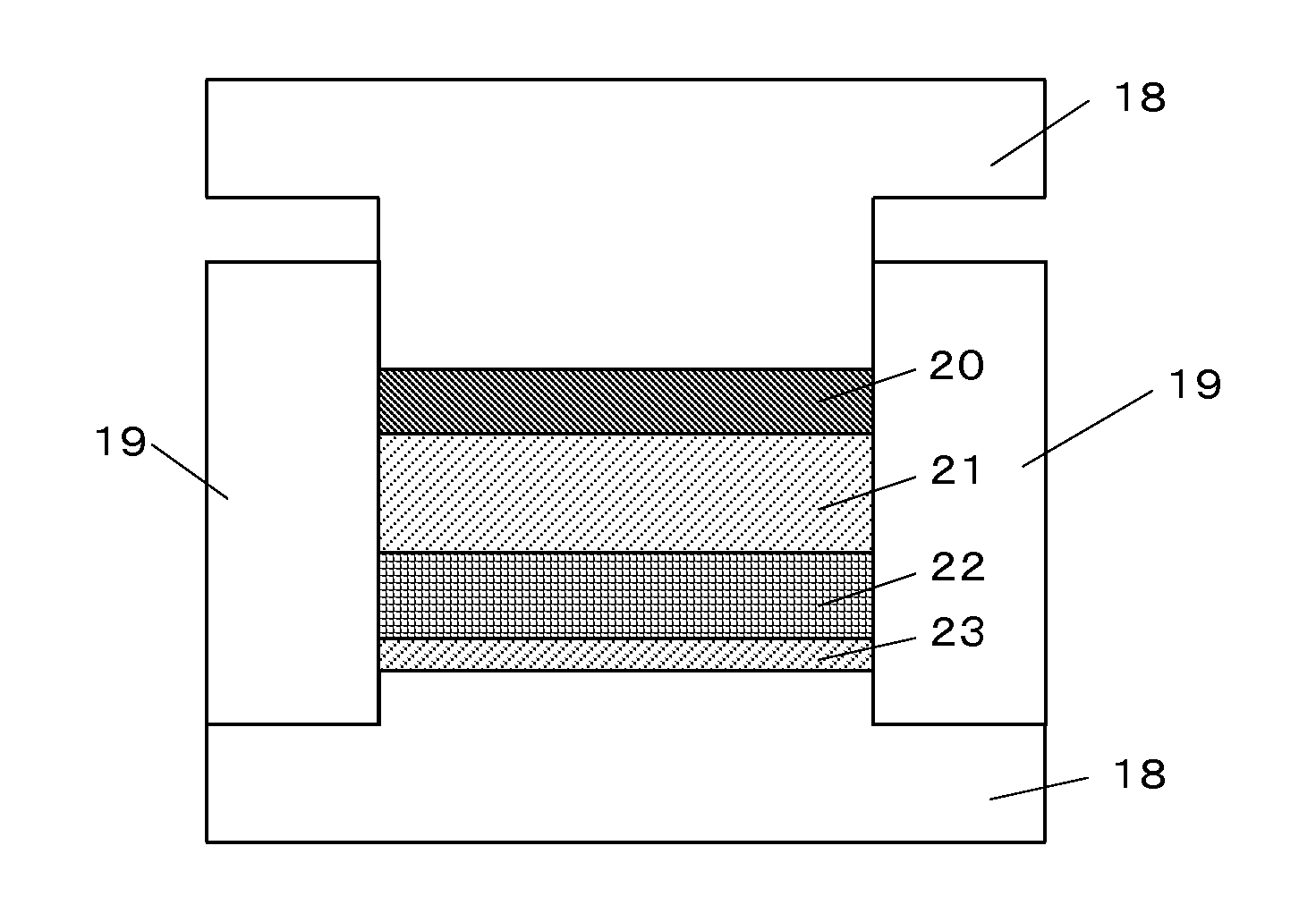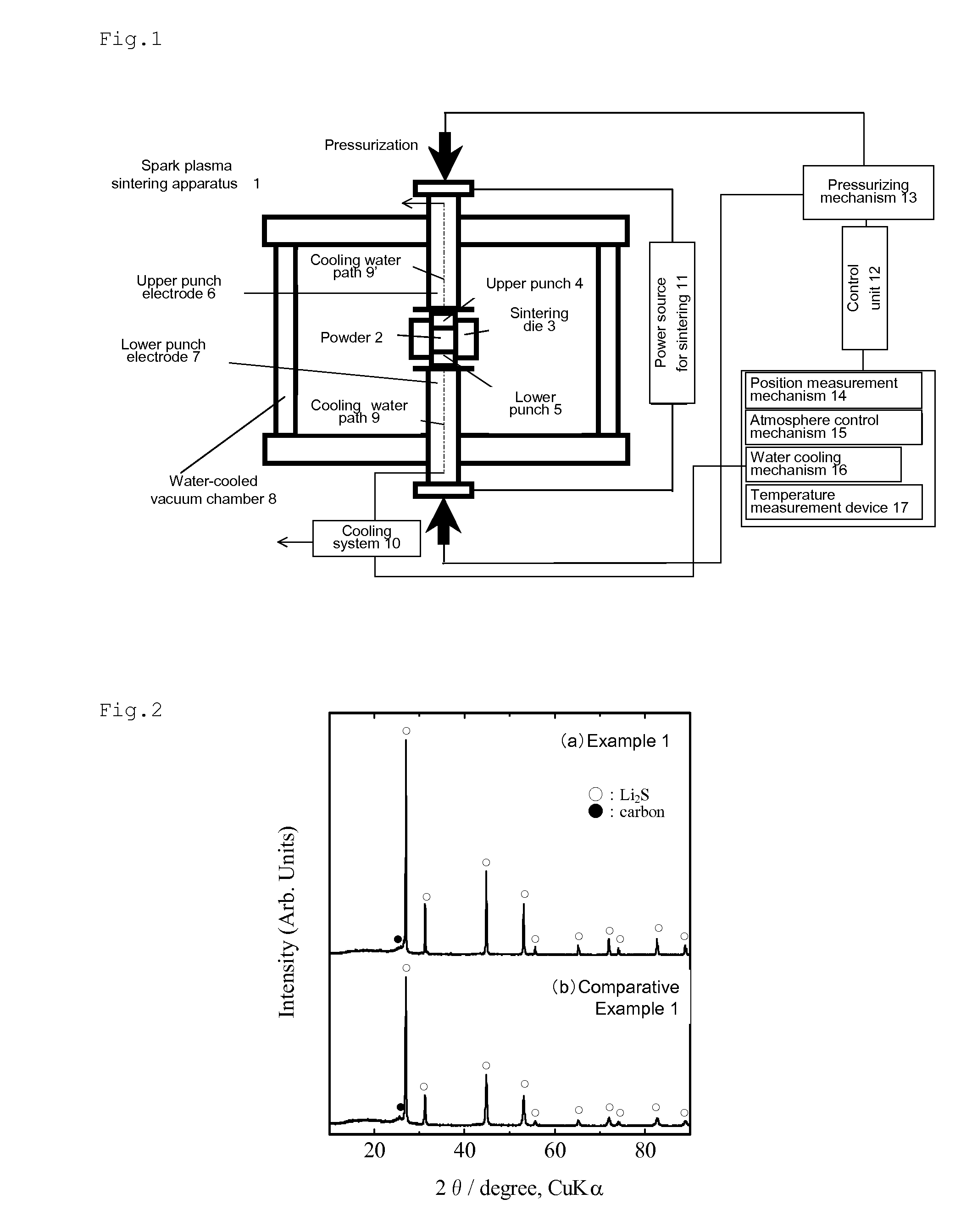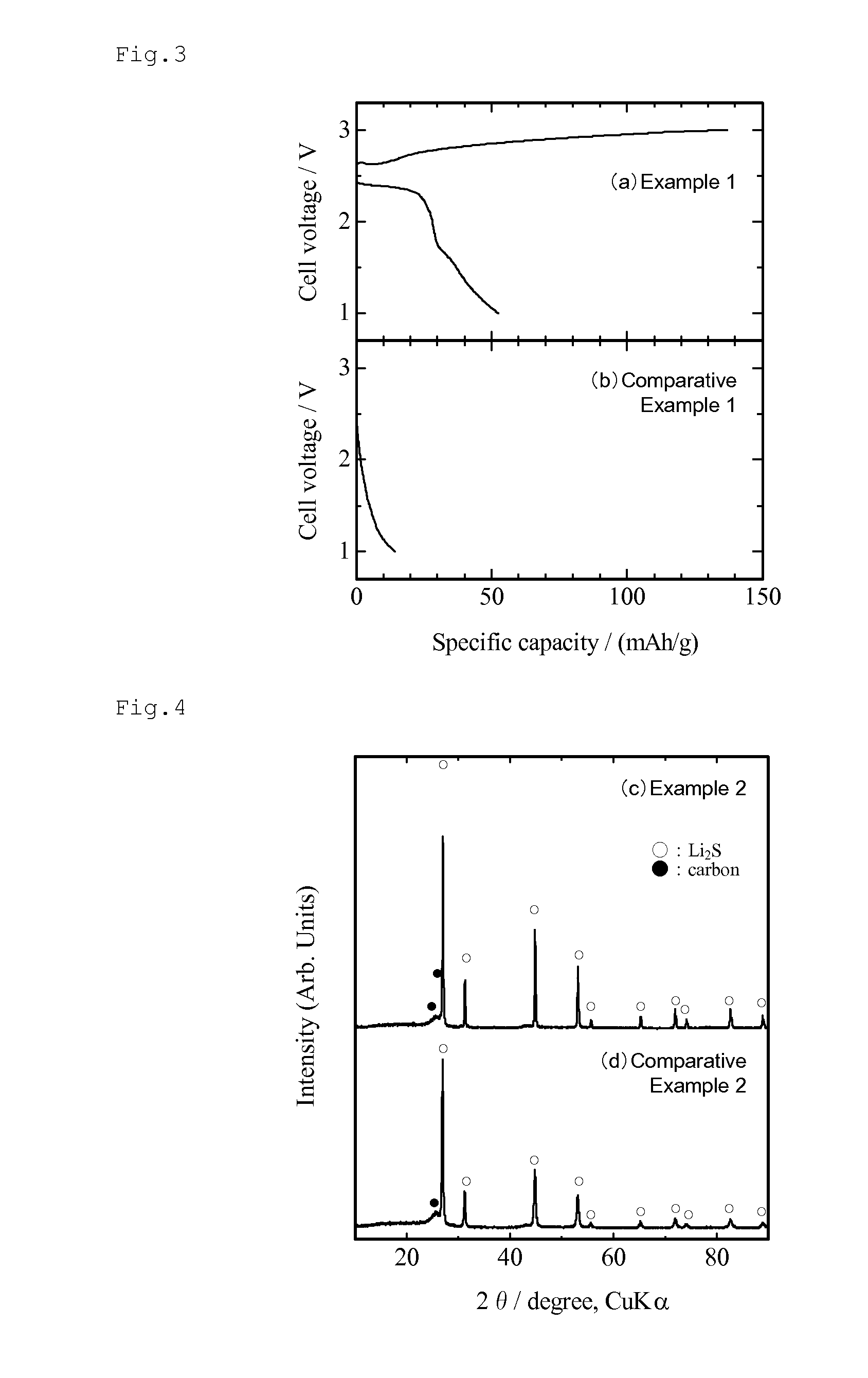Lithium sulfide-carbon complex, process for producing the complex, and lithium ion secondary battery utilizing the complex
a lithium ion secondary battery and carbon complex technology, applied in sustainable manufacturing/processing, non-aqueous electrolyte cells, cell components, etc., can solve the problems of less negative electrode options, and low so as to improve the electronic conductivity of electron sulfur
- Summary
- Abstract
- Description
- Claims
- Application Information
AI Technical Summary
Benefits of technology
Problems solved by technology
Method used
Image
Examples
example 1
[0071]Lithium sulfide (Li2S) (0.4 g; average particle diameter: 16 μm) and 0.2 g of acetylene black (AB) (specific surface area: 68 m2 / g) (lithium sulfide:acetylene black (weight ratio)=2:1) were weighed in a glove box in an argon gas atmosphere at a dew point of −68° C. They were put in a zirconia pot, and mixed by a planetary ball mill for about 30 minutes. The resulting mixture was placed in a graphite mold having an inner diameter of 15 mm in the glove box.
[0072]Subsequently, the graphite mold containing the starting materials was placed in an electric current sintering apparatus. The current-carrying unit including the graphite mold and electrodes was placed in a vacuum chamber. The inside of the chamber was degassed under vacuum (about 20 Pa), and highly pure argon gas (oxygen concentration: about 0.2 ppm) was charged into the chamber until the pressure reached atmospheric pressure.
[0073]Thereafter, a pulse current of about 900 A (pulse width: 2.5 milliseconds, frequency: 28.6...
example 2
[0084]A lithium sulfide-carbon composite was produced in the same manner as in Example 1, except that 0.2 g of lithium sulfide (Li2S) (average particle diameter: 16 μm) and 0.2 g of acetylene black (AB) (specific surface area: 68 m2 / g) (lithium sulfide:acetylene black (weight ratio)=1:1) were used as starting materials.
[0085]FIG. 4 (a) shows an X-ray diffraction pattern of the obtained composite. As is clear from the X-ray diffraction pattern, peaks derived from Li2S and carbon were observed, confirming that the obtained composite was composed of Li2S and carbon. The fact that the weight change before and after electric current sintering treatment was about 4% suggests that the weight ratio of both components was maintained as they were mixed.
[0086]The tap density measured in the same manner as in Example 1 was 0.53 g / cm2, which was much higher than the tap density of a starting material mixture before electric current sintering (0.35 g / cm2) measured in Comparative Example 2, descri...
example 3
[0093]The lithium sulfide-carbon composite was produced in the same manner as in Example 1, except that 0.1 g of lithium sulfide (Li2S) (average particle diameter: 16 μm) and 0.2 g of acetylene black (AB) (specific surface area: 68 m2 / g) (lithium sulfide:acetylene black (weight ratio)=1:2) were used as starting materials.
[0094]FIG. 6 (a) shows an X-ray diffraction pattern of the obtained composite. As is clear from the X-ray diffraction pattern, peaks derived from Li2S and carbon were observed, confirming that the obtained composite was composed of Li2S and carbon. The fact that the weight change before and after electric current sintering treatment was about 4% suggests that the weight ratio of both components was maintained as they were mixed.
[0095]The tap density measured in the same manner as in Example 1 was 0.40 g / cm3, which was higher than the tap density of a starting material mixture before electric current sintering (0.32 g / cm3) measured in Comparative Example 3, described...
PUM
| Property | Measurement | Unit |
|---|---|---|
| specific surface area | aaaaa | aaaaa |
| pressure | aaaaa | aaaaa |
| particle diameter | aaaaa | aaaaa |
Abstract
Description
Claims
Application Information
 Login to View More
Login to View More - R&D
- Intellectual Property
- Life Sciences
- Materials
- Tech Scout
- Unparalleled Data Quality
- Higher Quality Content
- 60% Fewer Hallucinations
Browse by: Latest US Patents, China's latest patents, Technical Efficacy Thesaurus, Application Domain, Technology Topic, Popular Technical Reports.
© 2025 PatSnap. All rights reserved.Legal|Privacy policy|Modern Slavery Act Transparency Statement|Sitemap|About US| Contact US: help@patsnap.com



